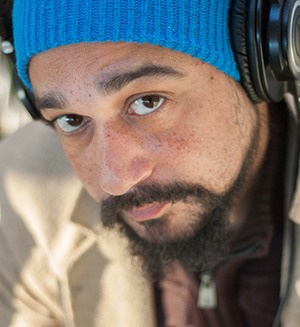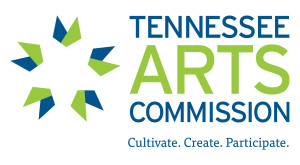At Analog at the Hutton
“This Is Just A Story”: Chatterbird and Insomnia’s My Closest Friend
“This is just a story. You’ll understand it if you listen,” says Tavius Marshall in the new work Insomnia’s My Closest Friend with text by Marshall and music by Joshua Dent. The work premiered at Analog at the Hutton in Nashville this past Monday, performed by the Chatterbird ensemble. In the piece, Marshall’s spoken word poetry charts a course through his own life and the ongoing struggle to find a balance between being a “Manic Maniac and Black, Biracial, Bisexual, Depressed artist.” Marshall’s clever wordplay and passionate emotional intensity are accompanied by Dent’s intricate string and percussion writing, which tends to break into a blistering, lovely lyricality during the instrumental interludes between the major spoken word movements. The work contextualizes Marshall’s often-turbulent biography in light of the history of mental health, socially acceptable modes of creativity, and the way social stigmas surrounding mental illness are compounded when someone navigating these issues presents as black and/or biracial.

Though Insomnia’s My Closest Friend is a work with a number of complex themes, one of the richer and more striking is the way that Marshall frames the relationship between mental illness and his own creativity. Obviously, in that this piece is about Marshall’s mental health struggles literally, there’s an irreducible degree to which the piece will have to frame those struggles as a “source” of that creativity, both in the case of Marshall’s poetry and Dent’s accompaniment. Take for example the expressive character of the second movement “Mania.” As the movement reaches its peak of intensity, the intricate, rhythmic layers of Dent’s ensemble writing very nearly drown out the delivery of Marshall’s text, right as that text’s sense of semantic coherence reaches a point of almost-dreamlike, free-associative incomprehensibility in its own right. In other words, both text and music here and throughout the structure of the whole work treat Marshall’s “Mania,” “Depression,” and cry for “Help” as the subjects of a series of continuous character portraits.
And yet, at every moment Marshall pushes against this sort of simplistic 1:1 reading. “My stint as an artist,” Marshall says in the last movement, “offers me to take my crazy the farthest, creating an outlet so I don’t need to starve this part of me,” and yet it’s clear throughout the work, as he describes the difficulties of holding down a job when you can’t sleep sometimes for four or five days at a time that there’s absolutely nothing romantic about bipolar disorder. And “Romantic” really is the keyword here.
In ways that are often hard to parse, the cultural inheritance of the 19th century informs many of our basic notions of art and artistic creativity, and perhaps nowhere more prominently than in the world of music. It seems hardly surprising given that Romantic ideas about the power of the irrational and sublime seem almost perfectly suited to the wordlessness and textural potentiality of music. It’s then equally unsurprising that “musical genius” and “madness” were practically synonyms by the end of the 19th century and remain so vestigially in the all-too-frequent depictions of Beethoven the “tortured” genius or an over-emphasis on the effect of mental illness on the music of Robert Schumann.
Historian James Whitehead’s Madness and the Romantic Poet: A Cultural History works through the historical construction of a connection between “madness” and artistic “genius,” which he argues reached its zenith in the heights of the 19th century. Whitehead demonstrates that Romanticism was not so much a cultural “response” to the rationality and orderliness of the preceding century and the Enlightenment as so many others have argued, but rather, perhaps counter-intuitively, an extension of it into the rapidly changing sociopolitical scene of the early Industrial Revolution. The “mad genius” was not an avatar of revolt against 18th century order, but rather a post-facto cultural means of containment for the irrationality that persisted into the age of industrial capitalism, colonialism, and the rapid technological change that supported both. In this account, Whitehead draws largely on Michel Foucault’s History of Madness, which frames “madness” not so much as a useful term describing a given set of medical symptoms, but rather as a culturally constructed category that can readily and effectively cordon off any socially or politically disagreeable ways of thinking or being.
Marshall too draws on a similar line of thinking in the first movement, where he describes the term “drapetomania,” coined in 1851 by the American physician Samuel A. Cartwright to explain away as mental illness the fact that so many enslaved people attempted to flee captivity. Or in Marshall’s own words “Insanity used to be the pathological intent to escape from slavery!?!” The same idea runs throughout the rest of the work. Marshall’s “circular calamity of collapsing mental galaxies” and the insomnia, alcoholism, and inability to focus he describes stemming from it create problems that compound themselves in light of the necessity of paying bills and of facing a world built for white men on the backs of black labor. Or again in Marshall’s own words
Under the plea for normalcy being black or being free becomes “lunacy” and the machine was never updated, just repurposed not desegregated we just got conflated whiteness with being integrated. Sedated the creative, quitted the elated, demonized the frustrated, and moved to imprison anyone not white related while never addressing the issue. Tissue and sinew of the American fabric full stop lacks the ability to face the facts of its reactive fear of Black. Detracting from conversation of any psychological relation to a system THAT IS NOT MADE FOR THEM. Replacing the sin of physical ostracization with systematic slavery-based incarceration.

By the work’s end, the way Marshall reimagines mental illness as a “source” of musical inspiration in Insomnia’s My Closest Friend is clear. “This is just a story,” he says. “Something to help you sleep.” Instead of imagining the passions and suffering of mental illness as the necessary cost of “great genius,” for Marshall and Dent the spectrum of intersectional ways that the world deems us “unfit” is a shared pain and the solidarity of music-making is a way of making sense of that pain and perhaps showing a way forward—in a sense, collaborative musical performance as a sort of informal group therapy for both artist and audience. And indeed, here Marshall implores us: “Please get help.”
The performance was followed by a brief talk with Dent, Marshall, and Assistant Professor in the Department of Psychological Sciences and Counseling at Tennessee State University, Dr. Raquel Martin discussing the importance of mental health, particularly among young black men. In the talk, Martin expanded on a number of ideas from the performance but with particular attention to the issue of the cost of mental health care. With or without insurance, the costs of seeing licensed therapists or councilors are obscenely prohibitive, to say nothing of difficulty or cost in coordinating transportation to and from appointments or even being able to set aside that kind of time in the first place. While the theme of the night was the importance of getting help where possible, the question of exactly how often and for whom it’s possible frustratingly remains. With respect to this issue, Chatterbird sought donations in the name of the charity Black Men Heal, a non-profit “dedicated to providing access to mental health treatment, psycho-education, and community resources to men of color.” If you’re interested in donating to Black Men Heal, you can do so here.



